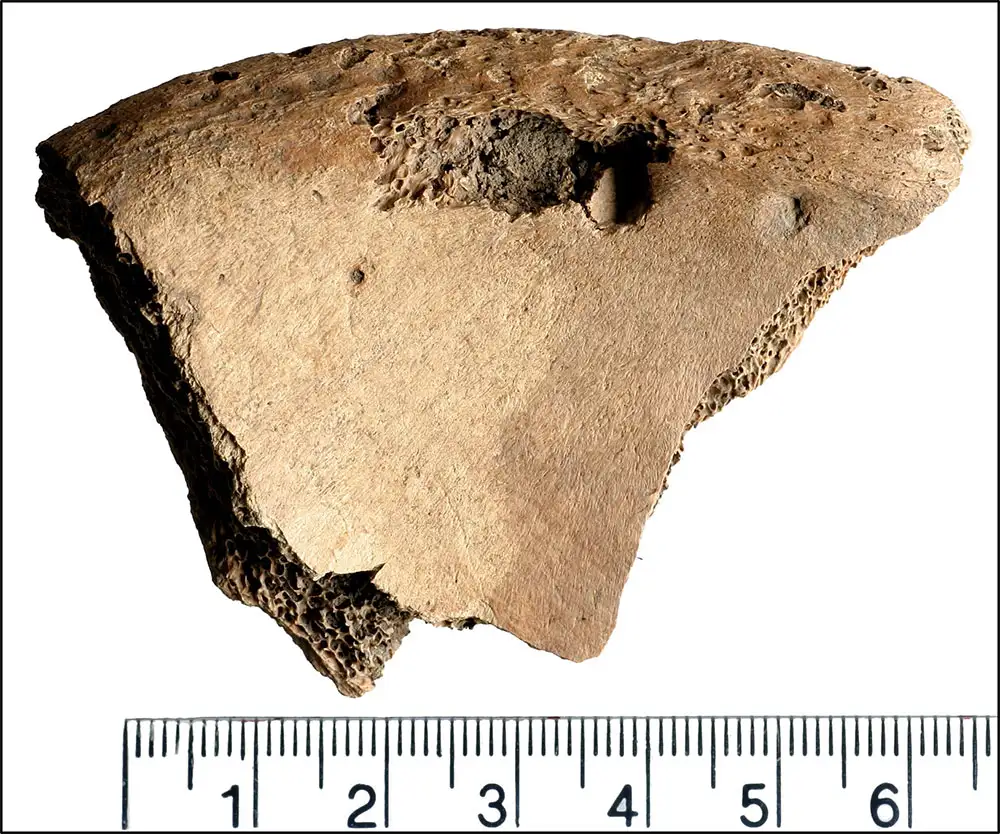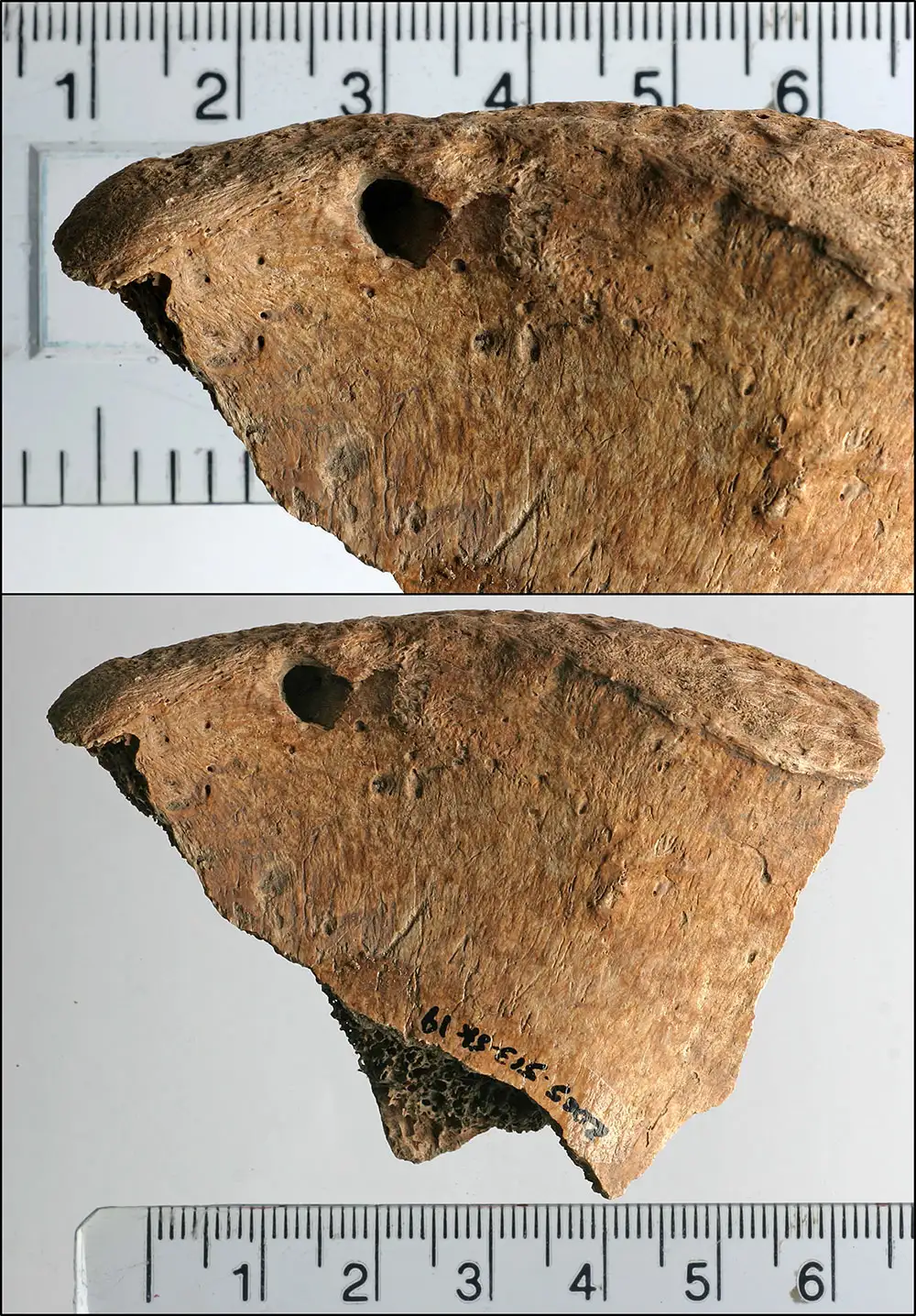Bite marks found on a Roman-era skeleton in York are the first physical evidence that humans fought animals in gladiatorial combat, experts have said.
The discovery was made in a cemetery which was believed to contain the remains of gladiators, with bite marks from a large cat found on the pelvis.
Previously, images of gladiators being mauled by lions have been found in mosaics and on pottery, but this was the first time skeletal evidence of the fighting has been found.
The skeleton was excavated and examined from one of the best-preserved gladiator graveyards in the world, Driffield Terrace, where researchers announced the archaeological examination of 82 well-built young male skeletons in 2010.
Academics said that the bones showed distinct lesions and, when compared with modern zoological teeth marks, they were identified as coming from a large cat.
Malin Holst, from the University of York and managing director of York Osteoarchaeology, which specialises in the analysis of human remains, said: “The bite marks were likely made by a lion, which confirms that the skeletons buried at the cemetery were gladiators, rather than soldiers or slaves, as initially thought and represent the first osteological confirmation of human interaction with large carnivores in a combat or entertainment setting in the Roman world.”
Professor Becky Gowland, from Durham University’s Department of Archaeology, said: “This is an exciting new analysis and the first direct evidence of human-animal spectacle in Roman Britain and beyond.
“It also raises important questions about the importance and transport of exotic animals across the Roman Empire.”
The find sheds more light on Roman Britain and how people across the empire were entertained.


More research will follow into how lions came to be kept in Britain, and the lives of gladiators on the edge of the empire.
The research was carried out by an international team of bone specialists, osteologists, and archaeologists, led by Tim Thompson, professor of anthropology and vice president for students and learning at Maynooth University, Ireland.
He said: “For years, our understanding of Roman gladiatorial combat and animal spectacles has relied heavily on historical texts and artistic depictions.
“This discovery provides the first direct, physical evidence that such events took place in this period, reshaping our perception of Roman entertainment culture in the region.”
The lion bite wound – confirmed by comparing it to sample bites from a lion at a zoo – was not healed and is therefore likely to have been his cause of death. It is believed that the individual was decapitated after death, which appears to have been a ritual for some individuals in the Roman period, although the reasons for this remain unclear.
Analysis of the skeleton points towards this being a Bestarius, a gladiator role undertaken by volunteers or slaves.
Malin said: “This is a hugely exciting find because we can now start to build a better image of what these gladiators were like in life, and it also confirms the presence of large cats, and potentially other exotic animals, in arenas in cities such as York, and how how they too had to defend themselves from the threat of death.
“We often have a mental image of these combats occurring at the grand surroundings of the Colosseum in Rome, but these latest findings show that these sporting events had a far reach, well beyond the centre of core Roman territories. An amphitheatre probably existed in Roman York, but this has not yet been discovered.”
